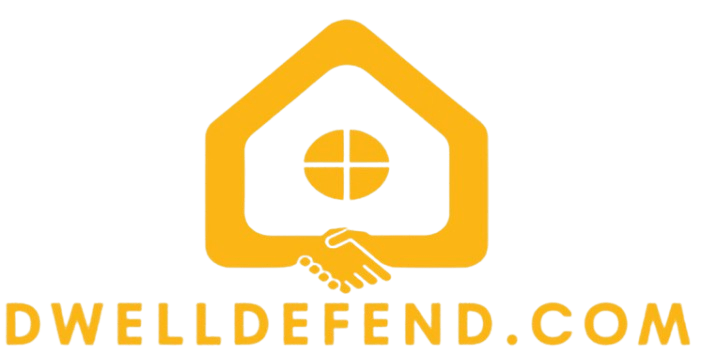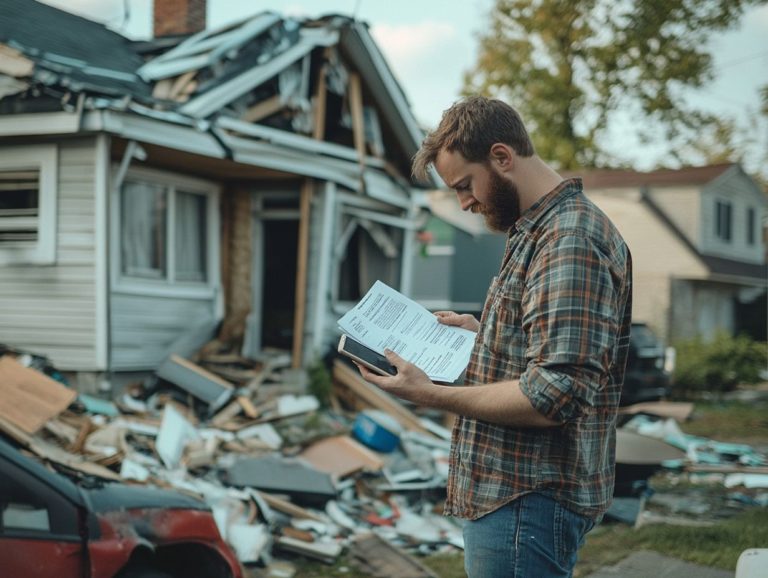What Is the Difference Between HO-1 and HO-3 Policies?
Homeowners insurance is essential for protecting your biggest investment. However, choosing the right policy can feel overwhelming.
This article explores the differences between HO-1 and HO-3 insurance policies. These popular options cater to various needs and budgets.
You’ll discover coverage levels, costs, and limitations of each policy. Plus, find tips to select the best coverage for your home!
Contents
Key Takeaways:
HO-1 and HO-3 policies offer different levels of coverage and have various limitations.
HO-1 policies are cheaper but limited, while HO-3 provides more comprehensive coverage for a higher price.
Consider your coverage needs and compare quotes to find the right insurance for your home.
Understanding Homeowners Insurance Policies
Understanding homeowners insurance is crucial for every homeowner. It explains the coverage for your property, including personal liability and property protection.
There are various types of homeowners insurance. For example, the HO-1 policy offers minimal coverage, while the HO-5 policy provides extensive protection.
You should know your coverage limits and assess your insurance needs. This ensures you are protected from common risks, like damage from upgrades or natural disasters.
What is HO-1 Insurance?
The HO-1 insurance policy, known as basic homeowners insurance, covers a few specific risks. This makes it a straightforward choice for homeowners.
This policy protects against dangers like fire, theft, and vandalism. However, it doesn’t cover natural disasters or liability, which can leave gaps in your protection.
HO-1 is ideal for those seeking minimal coverage, especially if you live in a low-risk area. If you need more protection, consider the HO-3 or HO-5 policies.
What is HO-3 Insurance?
HO-3 insurance is a popular choice for homeowners. It offers open perils coverage for your home and named perils coverage for your personal property.
This structure gives you peace of mind by protecting against various risks, including natural disasters and theft.
Unlike HO-1 or HO-2, the HO-3 strikes a balance between comprehensive coverage for your home and specific protections for your belongings.
When disaster strikes, your home s structure and personal items, like electronics and furniture, are protected. This combination ensures your property and possessions are safe.
Key Differences Between HO-1 and HO-3 Policies
The main differences between HO-1 and HO-3 policies lie in their coverage levels and limitations.
These differences shape your homeowners insurance choices and determine how protected you are.
Coverage Levels and Limitations
Coverage levels and limitations are critical components of homeowners insurance policies. They play a significant role when you’re comparing HO-1 and HO-3. These factors ultimately dictate the financial protection you receive in challenging situations.
HO-1 policies offer a straightforward approach focusing on specific perils, while HO-3 provides a more robust safety net. The distinction becomes particularly clear when you examine how they handle actual cash value versus replacement cost coverage.
If you opt for an HO-1 policy, you may only recover the depreciated value of your possessions in the event of a claim. This could leave you with unexpected financial gaps.
In contrast, choosing HO-3 typically means you’ll benefit from protection plans that cover full replacement costs for any damaged or destroyed property. This allows you to rebuild or replace your belongings without incurring significant out-of-pocket expenses.
Cost and Availability
The cost and availability of homeowners insurance, particularly HO-1 and HO-3, can greatly influence your decision. Understanding your unique insurance needs is essential.
Several factors contribute to the expenses associated with these policies. Your geographic region plays a pivotal role in determining premiums. For instance, residing in an area prone to natural disasters may result in higher rates due to increased risk.
The coverage options you select are also critical. While HO-3 provides more comprehensive protection compared to HO-1, it usually comes with a higher price tag. Additionally, availability may vary based on your home’s characteristics, including its age, construction materials, and security features.
Which Policy is Right for You?
Selecting the right homeowners insurance policy is a crucial decision. It hinges on several key factors such as the type of home you own, the value of your personal belongings, and your unique insurance needs.
Each element plays a vital role in ensuring you choose a policy that protects your investment and aligns with your lifestyle.
Factors to Consider
When choosing a homeowners insurance policy, consider the following critical factors:
- Coverage limits
- Types of personal property
- The necessity of liability coverage
Evaluating these aspects carefully ensures you have comprehensive protection for your assets and the peace of mind you deserve.
Coverage limits dictate the maximum amount an insurer will pay in the event of a claim. Understanding the true value of your home and belongings is vital to avoid significant out-of-pocket expenses.
Different types of personal property, such as electronics or jewelry, may require additional riders or endorsements for full protection.
Liability coverage is crucial as it safeguards you against potential lawsuits arising from injuries occurring on your property.
Finding the right balance between comprehensive coverage and cost-effectiveness is key to securing a policy that meets your needs without breaking the bank.
Tips for Choosing the Best Homeowners Insurance Policy
Finding the ideal homeowners insurance policy demands careful consideration and strategic planning. Employ effective strategies for shopping around for quotes while gaining a thorough understanding of your coverage options.
This approach ensures you make informed decisions to best protect your home and assets.
Shopping Around for Quotes
Shopping around for homeowners insurance quotes is essential for pinpointing the best coverage options and costs that meet your unique needs. By gathering multiple quotes, you can effectively compare not only premium prices but also the specific features each policy offers.
Consider factors like deductibles, liability limits, and optional add-ons, as they shape your overall protection. It s equally important to assess the reputation and customer service of insurance providers when evaluating these estimates.
Understanding how different policies balance coverage against costs enables you to make informed decisions, ensuring you discover the perfect insurance plan tailored specifically to your situation.
Take action now to protect your home and assets! Request quotes or consult with an expert to find the best homeowners insurance policy for you.
Understanding Your Coverage Needs
Understanding your homeowners insurance is essential. It ensures your property and liabilities are protected against unforeseen events. To determine the right level of coverage, consider several important factors.
The value of your property is a significant consideration. A comprehensive appraisal can provide valuable insight into its worth. Remember to factor in any recent upgrades or renovations, like a new roof or high-end appliances, as these enhancements can increase your overall replacement costs.
It’s crucial to think about potential risks in your area. Natural disasters or elevated crime rates may require you to consider enhanced coverage. By combining these elements, you can tailor your insurance policy to better suit your unique circumstances.
Frequently Asked Questions
HO-1 vs. HO-3 Policies
What is the difference between HO-1 and HO-3 policies?
HO-1 and HO-3 are two types of homeowners insurance policies. The main difference is in the coverage level they provide. While HO-1 offers basic coverage for specific named risks, HO-3 provides more comprehensive coverage for a wider range of risks.
Covered Perils
What perils are covered under an HO-1 policy?
HO-1 policies cover a limited number of risks, typically including fire, lightning, windstorm, hail, explosion, riot, aircraft, vehicles, smoke, and theft.
What perils are covered under an HO-3 policy?
HO-3 policies cover a wider range of risks than HO-1. In addition to HO-1 perils, HO-3 includes damage from falling objects, snow/ice/sleet weight, water damage from plumbing, heating, or air conditioning, and accidental discharge/overflow of water or steam.
Cost Comparison
What is the difference in cost between HO-1 and HO-3 policies?
HO-3 policies tend to be more expensive than HO-1 due to the broader coverage. However, the exact cost varies based on factors such as location, size, and age of the home, as well as the insurance provider.
Choosing the Right Policy
Which policy is better for me, HO-1 or HO-3?
The choice between HO-1 and HO-3 depends on your individual needs and budget. If you want basic and affordable coverage, HO-1 may be suitable. However, if you prefer comprehensive coverage and are willing to pay a higher premium, HO-3 might be a better choice.
Upgrading Policies
Can I upgrade from an HO-1 to an HO-3 policy?
Yes, you can upgrade from HO-1 to HO-3. Keep in mind this upgrade will likely result in a higher premium, but you will also receive broader coverage and more protection for your home and belongings.
Ready to choose the best policy for you? Contact us today!
Summary: Understanding your homeowners insurance options is crucial for protecting your property. Consider the coverage types, risks, and your budget to make an informed decision.




